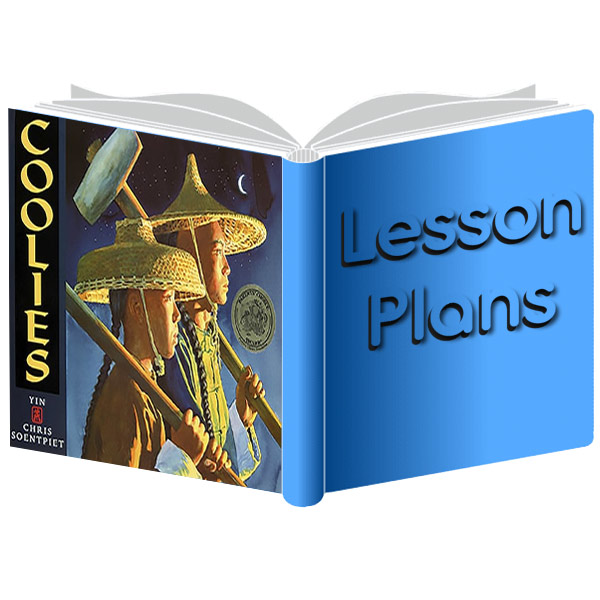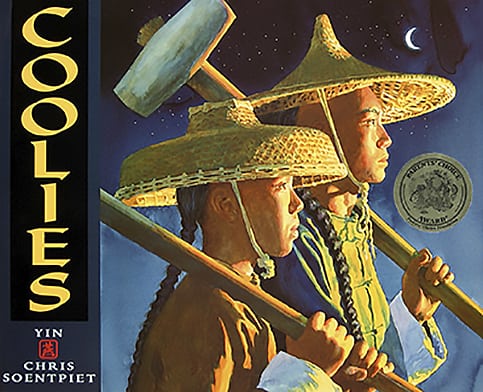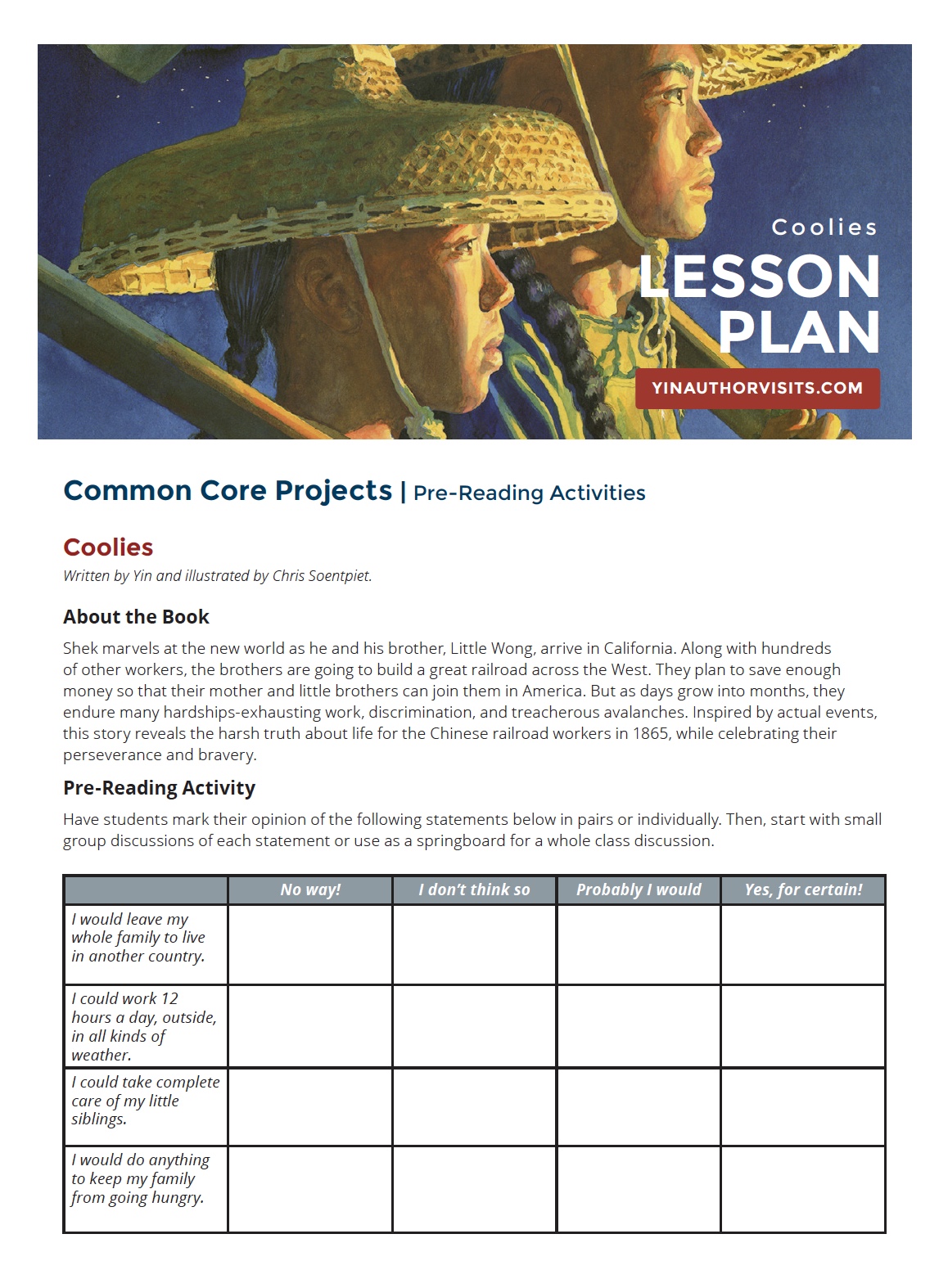Theme: The book, Coolies can be used to introduce your students to the history of the transcontinental railroad, immigration, foreign language, Chinese-American studies and Chinese culture.
Pre-reading: Show the students the cover of the book, read the title, author and illustrator’s name. Ask them what they think the book will be about. Explain that the grandmother will tell a story that happened many years ago. Have the students look at a globe or world map to locate China and the United States.
Reading: As you read and show the illustrations have students look closely at the drawings. What details can they find in the pictures? Have them study the expressions on the faces of the characters. How do their expressions change during the story? Can your students tell how the characters’ feeling change by the illustrations?
The brothers are from Canton, China. Which body of ocean did they cross to reach San Francisco? Have a map nearby to measure the distance. Where is China located? Which continent is it located on? How big is China? How can we get to China today?
Interviews: Have your students interview a Chinese-American or someone who has emigrated to the United States. Then, ask them to write a short story about that person and their experiences.
Geography: Before embarking on their long journey, Shek and Wong had to pack some belongings. Have the students plan a trip to China and ask them to estimate how far and how long will it take. What will they need to bring on their trip? What will they see when they get there? Have them describe the different geographies that they might experience – rivers, mountains, lakes, deserts, plains, farms, factories, cities etc.
Science: Using the food pyramid, ask the class to plan meals for the proposed trip. Are there snacks or any special foods that they or their family might require? What is a rice paddy? Try growing plants in a variety of ways – soil, hydroponics etc. Keep a journal of their growth. In Coolies, the brothers had to cross a stormy ocean. Explore currents and how oceans flow. Do lakes and rivers have currents? What other bodies of water have currents?
Social Studies: Spend some time studying Chinese history. What are the challenges of the Chinese of today compared to the Chinese during the 1800s? Ideally, early February is the best time to study Chinese history as it coincides with the Chinese New Year. Read the book, The Last Dragon written by Susan Miho Nunes.
Talk about immigration. Are there any recent immigrants in the class? Make a list of all the countries that your students’ ancestors came from. When did they arrive in America? Mark all of these countries on a world map. How many countires are there in the world? How many countries do your students’ ancestors come from? Does the class know any famous American immigrants?
Make a guidebook on China. Cover topics like cities, geographical features, customs, traditions, folklore, early history, food, games, traditional dress.
Literature: Read Oranges on a Golden Mountain by Elizabeth Patridge, The Last Dragon by Susan Miho-Nunes, Brothers (the sequel to Coolies) by Yin. Look for other books by Yin or Chris Soentpiet. If you really enjoyed Coolies write a review and post it online at Amazon or Barnes and Noble so others can enjoy your reading experience.
Art: Chris Soentpiet’s art style is realistic. Ask someone to model for your class, and have students try and sketch the model. Talk about different art techniques and the use of light and shadow to make the drawings look real.
Bulletin Board: Display a large “sack” and have each student list what they would pack if the had to leave home suddenly. Remind students that they will have to carry the “sack” for hours, so no televisions please!
More Coolies Lesson Plans
B) Created by Yinauthorvisits.com
Common Core Lessons: Created for yinauthorvisits, this packet of lesson plans is ready to download and print for use in your class. Designed for Common Core Standards for the 3rd Grade, the packet may be adjusted for grades higher and lower. Feel free to use and enjoy all or parts of the plan.






